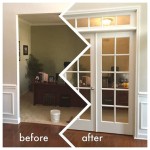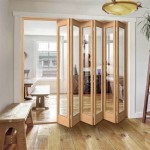How To Do Interior Design Without a Degree
Embarking on a career in interior design is often perceived as requiring a formal education in the field. While a degree indeed offers structured learning and professional validation, it is not the singular path to success. Individuals with a passion for aesthetics, spatial planning, and an understanding of design principles can successfully pursue a career in interior design through alternative routes. This article outlines a comprehensive approach to navigating the world of interior design without the formal credential of a degree, focusing on skill development, portfolio building, networking, and practical experience.
Acquiring Foundational Knowledge and Essential Skills
The cornerstone of any successful interior design career, regardless of formal education, lies in a solid understanding of fundamental design principles. This includes elements such as color theory, spatial planning, balance and proportion, lighting, materiality, and an awareness of various architectural styles. Individuals lacking a formal education must proactively seek out resources to acquire this knowledge.
Numerous avenues exist for self-directed learning. Online courses, offered through platforms such as Coursera, Udemy, and Skillshare, provide structured lessons on various aspects of interior design. These courses often include assignments and projects, allowing for practical application of learned concepts. Furthermore, reputable interior design books and journals serve as indispensable resources, offering in-depth explanations of design principles and showcasing inspiring projects. It is crucial to curate a collection of resources that align with individual learning styles and career aspirations.
Software proficiency is also essential. Computer-Aided Design (CAD) programs, like AutoCAD and SketchUp, are industry standards for creating architectural plans and 3D renderings. Learning these programs allows designers to visualize and communicate their design concepts effectively. Similarly, photo editing software, such as Adobe Photoshop, is beneficial for enhancing images and creating professional presentations. The investment of time in mastering these tools is a crucial step toward professional credibility.
Developing a keen eye for detail is paramount. This involves actively observing and analyzing successful interior spaces. Visit showrooms, model homes, and design exhibitions to gain a firsthand understanding of design trends and innovative solutions. Pay attention to the interplay of light and shadow, the textures of different materials, and the overall harmony of the space. Critically evaluate what works and what does not, and consider how different elements contribute to the overall aesthetic.
Building a Portfolio to Showcase Skills and Experience
In the absence of a formal degree, a strong portfolio becomes the primary tool for demonstrating expertise and attracting potential clients. A portfolio is a collection of projects that showcases design skills, creativity, and problem-solving abilities. It should be meticulously curated and presented in a visually appealing and professional manner.
The initial projects in a portfolio may stem from personal endeavors. Redesigning one's own home, assisting friends or family with their decorating projects, or volunteering design services for local organizations are effective ways to gain practical experience and generate portfolio-worthy content. These projects offer opportunities to experiment with different design styles, work within budget constraints, and manage the practical aspects of implementation.
Documenting projects comprehensively is crucial. High-quality photography is essential for capturing the essence of each design. Before-and-after photographs are particularly powerful, demonstrating the transformative impact of the design intervention. Detailed descriptions of the design process, including sketches, floor plans, material selections, and challenges encountered, provide valuable insights into the designer's thought process and problem-solving abilities. Client testimonials, if available, add further credibility and demonstrate client satisfaction.
Consider including hypothetical projects in the portfolio. These projects allow designers to showcase their creativity and explore design challenges without the constraints of a real-world client. Develop detailed briefs for these projects, outlining the client's needs, budget, and desired aesthetic. This demonstrates the ability to conceptualize and execute design solutions from start to finish.
The presentation of the portfolio is just as important as the content. A professionally designed website or a well-organized physical portfolio demonstrates attention to detail and a commitment to quality. Ensure that the portfolio is easy to navigate, visually appealing, and reflective of the designer's personal brand.
Gaining Practical Experience Through Internships and Mentorships
Practical experience is invaluable for developing the skills and knowledge required to succeed in interior design. Internships and mentorships offer opportunities to learn from experienced professionals, gain hands-on experience in design projects, and build valuable industry connections.
Seeking out internships with established interior design firms is a strategic way to gain exposure to the industry. Internships provide opportunities to assist senior designers with various tasks, such as drafting plans, selecting materials, managing budgets, and communicating with clients. This hands-on experience allows interns to learn about the day-to-day realities of the profession and develop practical skills that are difficult to acquire through theoretical learning alone.
Networking is essential for identifying potential internship opportunities. Attend industry events, conferences, and workshops to connect with designers and firm owners. Online platforms, such as LinkedIn, can also be used to search for internships and connect with professionals in the field. Be proactive in reaching out to firms that align with design interests and express a genuine interest in learning from their expertise.
Finding a mentor who is willing to share their knowledge and experience is another valuable way to accelerate career development. A mentor can provide guidance on design principles, offer advice on business practices, and provide support and encouragement throughout the career journey. Seek out mentors who have a proven track record of success and who are willing to invest time in helping aspiring designers achieve their goals.
Consider offering pro bono design services to local organizations or non-profits. This provides an opportunity to gain practical experience, build the portfolio, and contribute to the community. These projects may not be financially rewarding, but they can provide valuable experience and demonstrate a commitment to social responsibility.
Building a Network and Marketing Services Effectively
Building a strong network and effectively marketing services are crucial for attracting clients and establishing a successful interior design practice. In the absence of the built-in network that a degree program offers, proactive networking becomes even more essential.
Attend industry events, such as design trade shows, conferences, and workshops, to connect with other designers, architects, contractors, and vendors. These events provide opportunities to learn about new products and trends, exchange ideas, and build relationships with potential collaborators. Actively participate in discussions, ask questions, and follow up with contacts after the event.
Utilize online platforms, such as social media, to showcase design work and connect with potential clients. Create a professional website or online portfolio to showcase projects, highlight design philosophy, and provide contact information. Regularly update social media accounts with new projects, design tips, and industry news. Engage with followers, respond to comments, and build a community around the brand.
Consider joining professional organizations, such as the American Society of Interior Designers (ASID), even without formal qualifications. While full membership might require a degree, affiliate or allied memberships can offer access to networking events, educational resources, and industry information. These memberships can provide opportunities to learn from experienced professionals and build credibility within the industry.
Develop a strong marketing strategy to attract clients. Identify the target market and tailor marketing efforts to their specific needs and preferences. This may involve creating targeted advertising campaigns, developing a strong online presence, or partnering with complementary businesses, such as real estate agents or contractors. Word-of-mouth referrals are also a powerful marketing tool, so prioritize providing excellent service and exceeding client expectations.
Effective communication skills are essential for building relationships with clients and collaborators. Be able to clearly articulate design concepts, actively listen to client needs, and effectively manage expectations. Building trust and rapport with clients is crucial for establishing long-term relationships and generating repeat business.
Continuously adapt and refine marketing strategies based on results. Track the effectiveness of different marketing channels and adjust tactics accordingly. Stay up-to-date on the latest marketing trends and technologies to ensure that marketing efforts are effective and efficient.

What Do Interior Designers And How To Become One

How To Become An Interior Designer Insights Archive Fairfield University News

Do You Need A License To Become An Interior Designer

How To Become An Interior Designer Without A Degree In 2024 Foyr

Interior Designer What You Need To Know Before Becoming Arch2o

How To Become A Self Taught Interior Designer Decorator In This I Share Did It

What Do Interior Designers And How To Become One

How To Become An Interior Designer Mymove

Do You Need To Be Good At Math An Interior Designer

Why Do You Need An Interior Design Sketching Tool Foyr
Related Posts








